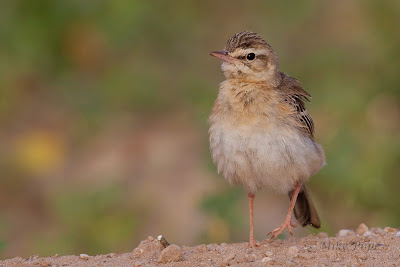Although it is still a little too early for 'autumn' migration, I though I would check out the oasis farm at Al Abraq, so another early wake-up call to get there while the temperatures were still bearable.
The sun was rising, just after I had turned off the main road to drive west to the farm and at the same time, the lights started going out on the highway to the Salmi border
 |
| Desert sunrise |
 |
| Eurasian Hoopoe (Upupa epops) |
 |
| Tawny Pipit (Anthus campestris) |
 |
| Ruff (Philomachus pugnax) |
 |
| White-throated Kingfisher (Halcyon smyrnensis) |
 |
| Adult Black-headed Bunting (Emberiza melanocephala) |
 |
| 1st year Black-headed Bunting (Emberiza melanocephala) |




























































